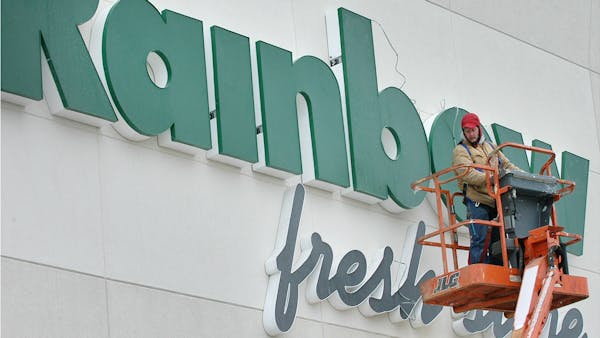The future of the nine Rainbow stores that will be sold off by Roundy's Inc. is largely unknown, but it is unlikely they'll stay as grocery stores given the overwhelming competition from big-boxes and other grocers that surround them.
For instance, the Rainbow store on Hwy. 13 in Savage has a Cub outlet across the street and a Target Supercenter nearby. And the Inver Grove Heights Rainbow store on Broderick Boulevard is across the highway from a behemoth Wal-Mart Supercenter.
Don Seaquist, head of United Food and Commercial Workers Local 1189, which represents grocery store workers in the east metro, agrees that the nine remaining stores — in Apple Valley, Blaine, Bloomington, Coon Rapids, Cottage Grove, Inver Grove Heights, Maple Grove, Savage and Shoreview — probably won't be bought by a supermarket chain. "If they haven't been bought by now [by a grocer], I don't think they will be bought," he said.
Milwaukee-based Roundy's Inc. announced Wednesday that it will sell most of its 27 Rainbow stores to a consortium of local supermarket companies led by Eden Prairie-based Supervalu, owner of Cub Foods. Once the $65 million deal is complete, 10 Rainbow stores will be rebranded as Cub, two will become Byerly's outlets and six will retain the Rainbow name under different ownership. Roundy's will continue to market its remaining nine Rainbow stores for now, but will close them if buyers can't be found.
David Livingston, a Wisconsin-based supermarket consultant and analyst, said some of the nine remaining sites could still make viable supermarket locations. "There could be another four or five [of the nine] that remain grocery stores," he said.
Livingston bases his assessment on an analysis he conducted when Rainbow parent Roundy's had 32 stores in the Twin Cities market. His research concluded that 25 locations could remain viable as grocery stores. (Rainbow has closed five stores in the past 16 months.)
In short, the success of the Rainbow stores that are on the block mostly depends on their location, experts say.
"Some of these locations are within great retail core areas, and they may go 'non-grocery' easily," said Tricia Pitchford, a retail broker with Cushman & Wakefield/NorthMarq, a Twin Cities real estate firm. "Others are more isolated, and they will be more challenged."
Most of the stores, which span about 60,000 square feet, are too large for specialty retailers, so they could be divided and reused by multiple tenants, Pitchford said.
But Minneapolis retail consultant Jim McComb said carving up a former grocery store to make way for two or three tenants is not as easy as it sounds.
"It's tough to cut them up because they're so deep," he said. "You could leave the back part of the store vacant, but you'd have to redo the electrical and [heating, ventilation and air conditioning]. On the surface it sounds attractive but it can be expensive when you look into what you have to do to break it up.
"If the location is decent, someone could come in an tear [the building] down and develop it into something else," McComb added.
It's unlikely new grocers coming into the market, such as Iowa-based Hy-Vee, would opt to buy the Rainbow stores, since they usually want a bigger footprint of about 90,000 square feet, McComb said.
Texas-based Whole Foods, which has made a big push in the Twin Cities in recent years, has generally built its own stores in tony ZIP codes or more urban areas.
In recent years, some of the larger big-boxes that have been abandoned by retreating retailers have ultimately been occupied by nontraditional retailers, such as fitness centers or medical offices, Pitchford said.
The overall Twin Cities retail market remains strong, according to Cushman & Wakefield/NorthMarq's recent Compass report. Vacancy rates continued to decrease from the five-year low of 7.8 percent in first-half 2013 to an even-lower 7.4 percent by year's end. The report states that this is partly due to landlords "more readily welcoming discount retailers, like Hobby Lobby and Total Wine & More, into their centers to fill many long-vacant big-box and junior-box spaces."
Because grocery stores tend to anchor their own shopping centers, the anchor closing or going away will affect smaller surrounding retailers. "When the main anchor goes dark," McComb said, "that eliminates a lot of the draw of the center, so the smaller stores will take a hit in sales. It would be unusual for that not to occur."
jmmoore@startribune.com • 612-673-7752 mike.hughlett@startribune.com • 612-673-7003
